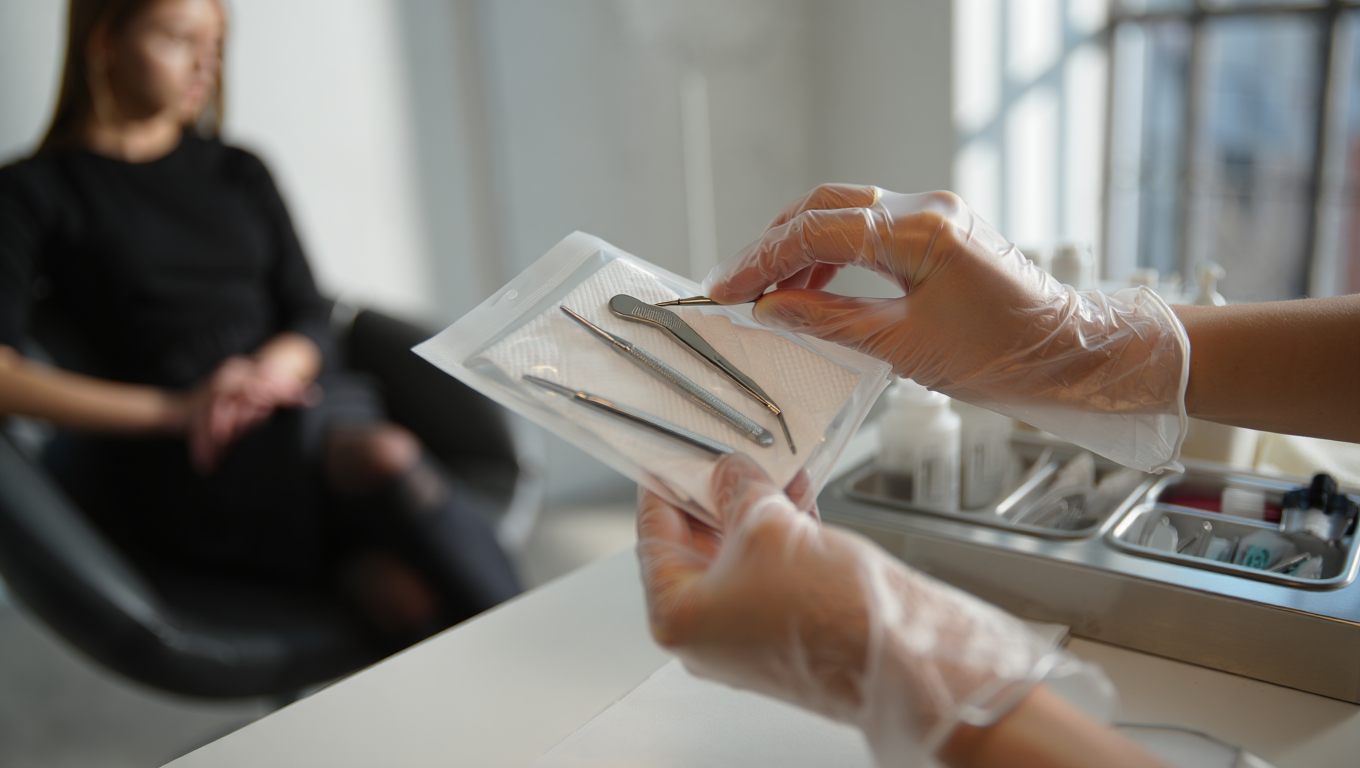A fresh manicure or pedicure feels like a perfect treat. It is a simple way to practice self-care and boost your confidence. However, a relaxing visit to the nail studio can pose health risks if the establishment does not follow proper procedures. Understanding what to look for is essential for your well-being. This is where nail salon safety standards come into play.
These standards are a set of best practices and regulations designed to protect both clients and technicians from infections and chemical exposure. They cover everything from basic cleanliness to advanced sterilization in nails salon. Grasping these concepts, including nail salon hygiene and specific safety protocols nails technicians follow, is crucial. The global pandemic highlighted the importance of these measures, making COVID salon safety a permanent concern. To make your next visit easier, we’ve created a handy checklist you can download at the end of this article.
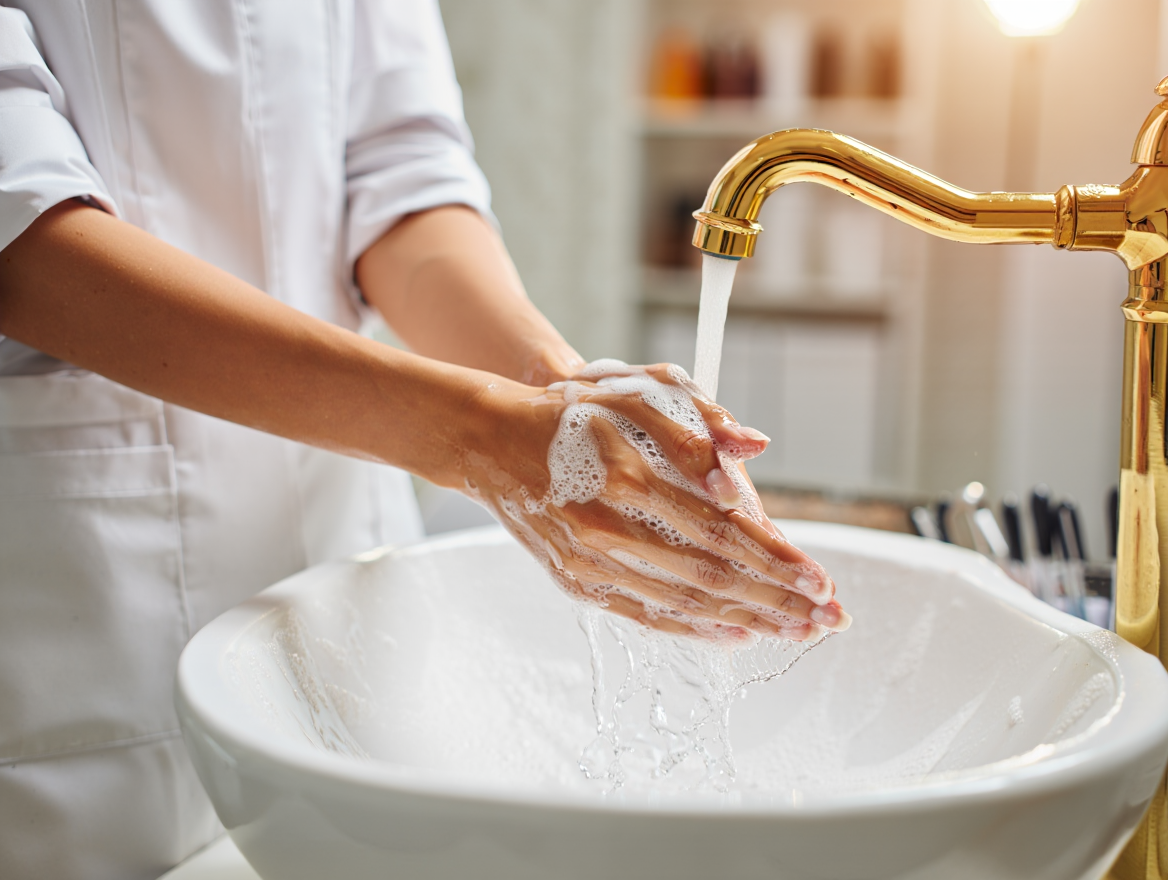
A Deep Dive into Nail Salon Hygiene
Excellent nail salon hygiene is the first line of defense against germs. It goes far beyond a tidy appearance. A truly clean establishment focuses on preventing the spread of bacteria, fungi, and viruses. This involves consistent cleaning schedules and attention to every detail. Clients should feel confident that the environment is sanitary from the moment they walk in. Adhering to high nail salon hygiene practices shows a business’s commitment to client health. It forms the foundation of trustworthy nail salon safety standards.
The Foundation of Cleanliness
Look at the studio’s general condition when you enter. Floors, workstations, and pedicure chairs should be visibly clean and free of debris. Dust and nail filings should not be accumulated on surfaces. Trash cans should be covered and emptied regularly. A clean environment reflects a professional attitude towards sanitation. It is a strong indicator of the place’s overall commitment. Poor general upkeep can be a red flag for other, less visible issues with their safety protocols nails.
A key aspect of cleanliness is how technicians manage their tools and space between appointments. Every surface a client touches must be wiped down with a hospital-grade disinfectant. This includes the table, armrest, and UV/LED lamp.
A study published in the Journal of the American Medical Association (JAMA) Dermatology (2019, USA) found that a significant percentage of nail salon footbaths tested positive for pathogenic bacteria when not cleaned correctly between clients. This research underscores the importance of vigilant cleaning. Prioritizing these steps is a non-negotiable part of nail salon safety standards.
Essential Practices for Technicians
Observe the nail technicians themselves. They should wash their hands thoroughly with soap and water between clients. Many professionals will also use a hand sanitizer as an extra precaution. They must wear a fresh pair of disposable gloves for each new service. This simple step is vital in preventing cross-contamination. Their attire should also be clean and professional. These personal habits are a direct reflection of the business’s internal policies on nail salon hygiene.
One of the most respected voices in the industry, Dr. Dana Stern, a board-certified dermatologist specializing in nail health, states, “A client should never hesitate to ask their technician to wash their hands or put on a new pair of gloves. Your health is the priority, and a professional will always be happy to comply.”
This advice empowers clients to take an active role in their own safety. A technician’s willingness to follow these basics demonstrates respect for both the client and their profession. It is a clear sign of strong safety protocols nails being in effect.
If a tool isn't metal and can't be sterilized, it must be new for you. This includes files, buffers, and wooden sticks.
Here are some immediate red flags to watch for regarding general hygiene:
- Dirty or overflowing trash cans.
- Visible dust, hair, or nail clippings on workstations.
- Technicians using the same gloves for multiple clients.
- Pedicure bowls that are only rinsed, not scrubbed and disinfected.
- Reusing single-use items like orange sticks or toe separators.
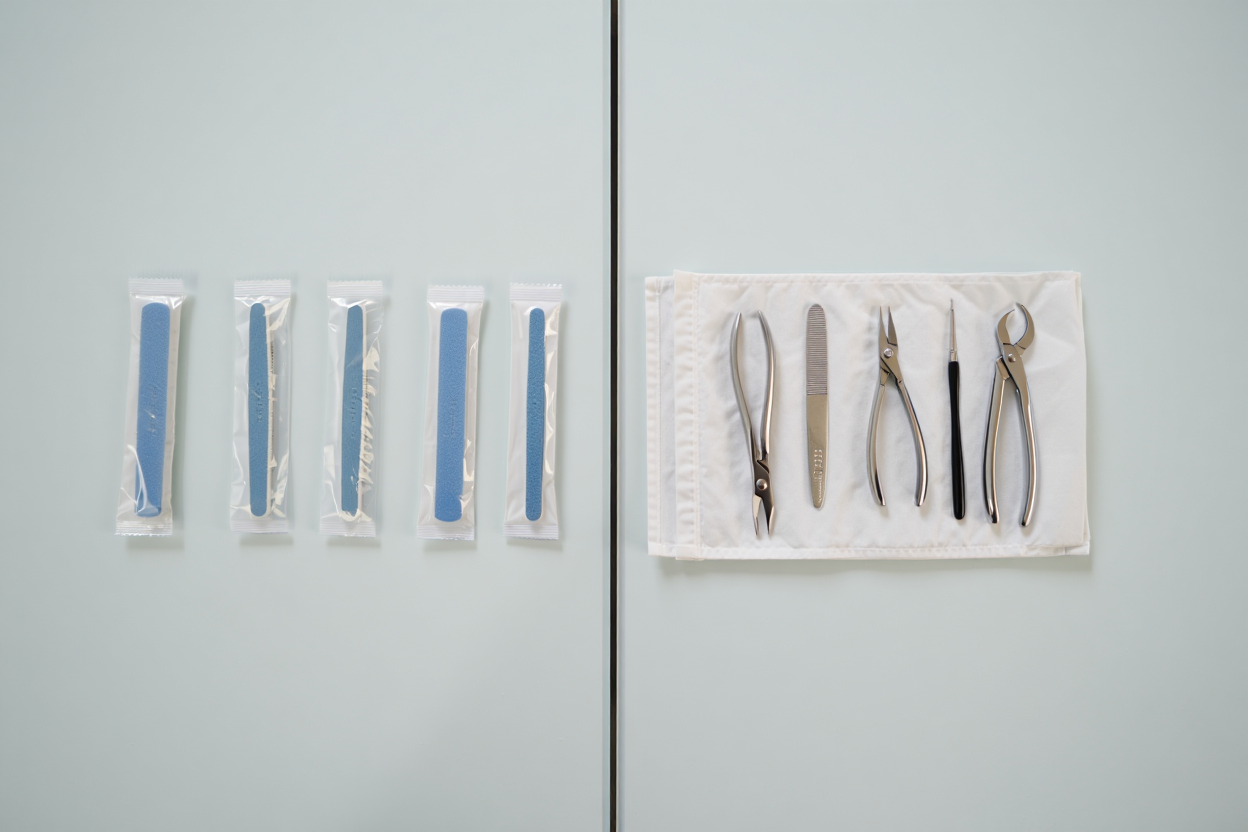
Understanding Safety Protocols Nails Technicians Must Follow
Beyond general tidiness, specific safety protocols nails technicians use are critical for preventing infections. These procedures dictate how tools are handled, disinfected, and stored. Proper protocols are methodical and consistent for every client, every time. They separate professional studios from establishments that cut corners. Following these rules is essential for maintaining high nail salon safety standards. The health of your nails and your entire body depends on it. These measures are designed to eliminate risk.
Proper Tool Handling and Disinfection
Understanding the language of clean is important. Cleaning is the physical removal of debris. Disinfecting uses chemicals to kill most germs on a surface. Sterilization in nails salon is the complete elimination of all microbial life, including spores. Metal implements, like clippers and pushers, must be properly disinfected after each use. This involves immersing them in an EPA-registered, hospital-grade disinfectant for the time specified by the manufacturer. Simply spraying them is not enough to ensure client safety.
Effective disinfection is a multi-step process. First, the tools must be scrubbed with soap and water to remove any visible debris. Only then can they be fully submerged in the disinfectant solution. The solution itself must be fresh and mixed according to the label’s directions. Technicians should use tongs to remove tools from the liquid to avoid skin contact. These rigorous procedures are a cornerstone of proper nail salon hygiene. They protect everyone from potential harm.
Single-Use vs. Reusable Items
Not all tools are created equal. Many items in a nail studio are porous and cannot be properly disinfected. This category includes emery boards, buffers, and wooden cuticle pushers. These items must be single-use. The staff should either give them to you after your service or throw them away in front of you. A professional business will never reuse these items on another client. This is a critical component of modern nail salon safety standards.
In contrast, tools made of non-porous materials like stainless steel can be reused. This applies to metal clippers, nippers, and cuticle pushers. However, they must undergo a strict cleaning and disinfection or sterilization process between every client. Asking about a studio’s policy on single-use items is a great way to gauge their commitment to safety. Respectable businesses are transparent about their safety protocols nails and procedures.
| Tool Type | Examples | Proper Procedure |
| Single-Use (Porous) | Emery boards, buffers, toe separators, wooden sticks | Must be discarded after one use. |
| Reusable (Non-Porous) | Metal clippers, metal pushers, glass files, drill bits | Must be cleaned and then disinfected or sterilized. |
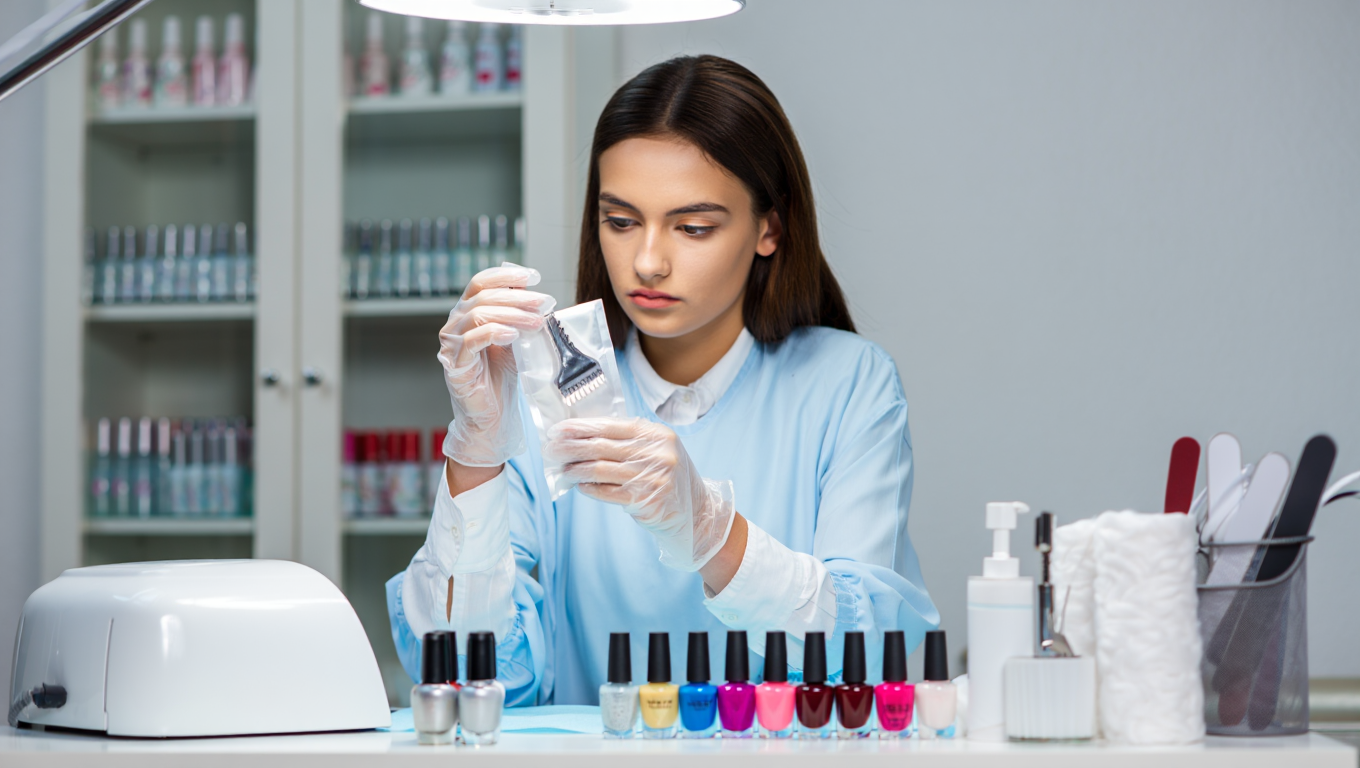
Navigating COVID Salon Safety Measures
The pandemic forever changed our expectations for public health. Nail studios were among the businesses that had to significantly adapt. These changes introduced new layers of protection for both clients and staff. Many of these enhanced practices remain in place. They have become a permanent part of superior nail salon safety standards. Understanding what to look for in terms of COVID salon safety is still very relevant. These measures help minimize the transmission of any airborne illness.
What Post-Pandemic Precautions Look Like
Excellent ventilation is now a top priority. Good airflow helps disperse airborne droplets and chemical fumes. Ask if the establishment uses an HVAC system with high-quality filters or has air purifiers. Some places may keep doors or windows open when possible. Physical barriers, like plexiglass dividers at manicure stations, are also still common. They provide an additional layer of protection. These elements are key to modern COVID salon safety.
Capacity limits and spacing between stations also contribute to a safer environment. You should not feel crowded in the space. Appointments should be spaced to allow for proper cleaning between clients. While mask mandates have relaxed in many areas, some businesses or individual technicians may still require or prefer them. Respecting these policies is important. These ongoing precautions are a sign that an establishment takes public health and its safety protocols nails seriously. Strong COVID salon safety is now a permanent fixture of a well-run business.
Good ventilation is invisible but vital. If the place has a strong chemical smell, the air exchange is likely poor.
Your Role as a Client in Upholding Safety
Clients also play a part in maintaining a safe salon environment. Being an informed and proactive customer helps everyone. Following a few simple steps can greatly enhance your personal safety and support the studio’s efforts. Your active participation reinforces the importance of high nail salon safety standards.
Here is a step-by-step guide to being a safety-conscious client:
- Do Your Research. Before booking, check online reviews for mentions of cleanliness or safety. Taking the time for choosing a reputable salon in your area is the most important step. Look at the salon’s social media for photos of their workstations and tool setups.
- Book an Appointment. Avoid walking in, especially at peak times. An appointment system helps the staff manage client flow. It also ensures they have adequate time to clean before you arrive. This is a key aspect of COVID salon safety.
- Arrive with Clean Hands and Feet. Wash your hands or use sanitizer upon entering the premises. If getting a pedicure, ensure your feet are clean. This helps reduce the overall microbial load in the environment.
- Speak Up. If you see something concerning, ask about it politely. You might ask, “Could you tell me how you clean your tools?” A professional will be happy to explain their safety protocols nails.
- Avoid Services with Open Wounds. Do not get a manicure or pedicure if you have any cuts, scratches, or bug bites on your hands or feet. These openings can be entry points for infection. It is better to reschedule your appointment.
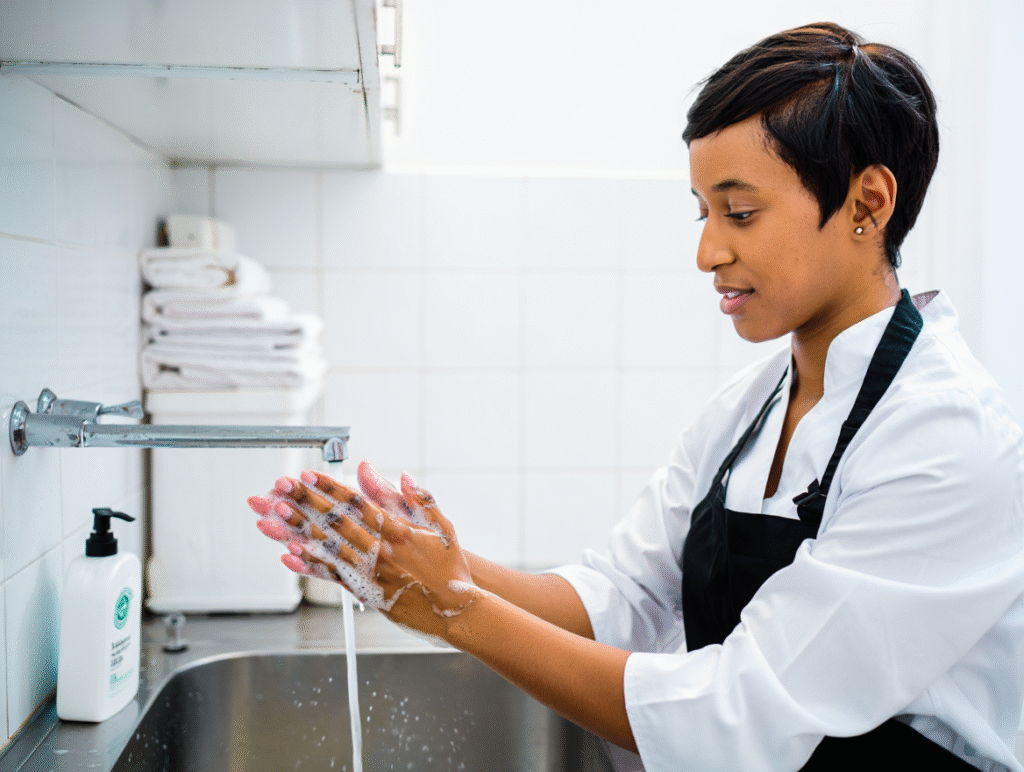
The Critical Importance of Sterilization in Nails Salon
While disinfection is effective, sterilization provides the highest level of safety. Sterilization in nails salon destroys 100% of microbial life, including tough bacterial spores. This level of decontamination is the standard in medical settings. For nail studios, it represents the gold standard for treating reusable metal tools. A business that invests in sterilization equipment is making a serious investment in client health. This commitment elevates their nail salon safety standards significantly.
Autoclaves: The Gold Standard
The most effective method for sterilization in nails salon is using an autoclave. An autoclave is a machine that uses high-pressure steam to kill all microorganisms. It is the same technology used to sterilize surgical instruments in hospitals. When a studio uses an autoclave, you can be completely confident that the metal tools are free of any contaminants. Ask the staff if they use an autoclave for their metal implements. Their answer is a major indicator of their dedication to nail salon hygiene.
A Canadian study from the University of Toronto (2021, Canada) analyzed tools from various personal service establishments and confirmed that autoclaving was the only method that consistently eliminated all forms of microbial life, including resilient spores. This research validates the superiority of this method. Observing the use of an autoclave is a key part of verifying a business’s sterilization in nails salon procedures. The process is a vital part of advanced nail salon safety standards.
Identifying Proper Sterilization Practices
Properly sterilized tools are typically presented in a sealed pouch. The technician should open this pouch in front of you at the start of your service. These pouches often have a heat-sensitive indicator on them. The indicator changes color when the correct sterilization temperature has been reached inside the autoclave. This provides visual confirmation that the process was successful. This transparency is a hallmark of excellent safety protocols nails.
Doug Schoon, a chief scientist with CND and a leading expert in the nail industry, often emphasizes, “Clients should look for tools presented in sealed sterilization pouches. It’s a clear, verifiable sign that the salon is going above and beyond standard disinfection.”
This expert advice gives clients a tangible detail to look for. If tools are just sitting in a tray or a UV box (which does not sterilize), it is a sign that the establishment is not meeting the highest level of nail salon safety standards. The process of sterilization in nails salon should be clear and visible.
Sterilized tools come in a sealed pouch, opened just for you. No pouch, no certainty.
Here are some key questions to ask a salon about their ventilation:
- Do you use an air purification system?
- What kind of filters are in your HVAC system?
- Is there a source of fresh air, like an open door or window?
- Do you have source-capture ventilation systems at each manicure station?
An investigation by the Colorado School of Public Health (2018, USA) found that nail technicians are exposed to significantly higher levels of volatile organic compounds (VOCs) than the general public, highlighting the need for powerful ventilation systems. This study reinforces why air quality is a major component of both client and technician health, making it a crucial part of COVID salon safety. The studio’s approach to air management speaks volumes about its commitment to overall nail salon hygiene.
Frequently Asked Questions
How can I verify a salon’s license?
Most state cosmetology boards have an online database where you can look up the license status of both the business and the individual technicians. Licenses should also be physically displayed in a prominent place within the establishment. Checking for a valid, current license is a basic first step in confirming they meet minimum nail salon safety standards.
Why is proper ventilation so important in a nail salon?
Proper ventilation is crucial for two main reasons. First, it disperses the chemical fumes from products like acrylics and polish removers, protecting both you and the staff from inhaling them. Second, in the context of COVID salon safety, good airflow helps reduce the concentration of any airborne viruses, lowering the risk of transmission.
What’s better: bringing my own tools or using the salon’s?
If you have concerns about a studio’s tool cleaning process, bringing your own can be a safer option. However, if a place demonstrates excellent sterilization in nails salon practices, such as using an autoclave and sealed pouches, their tools are likely cleaner than anything you could achieve at home. Relying on their proven safety protocols nails is often the best choice in a high-quality establishment. Evaluating their nail salon hygiene will help you make the right decision.
Before concluding this important article on nail salon safety during and beyond the COVID-19 pandemic, here is a video featuring essential nail salon safety tips during COVID-19 to help clients and technicians stay protected.
Conclusion
Your health and safety should always be the top priority. A beautiful manicure is not worth the risk of a nasty infection. By being an observant and informed client, you can protect yourself effectively. Pay close attention to the establishment’s overall cleanliness, and do not be afraid to ask specific questions about their procedures. Look for clear evidence of proper tool handling, disinfection, and sterilization. The best studios are proud of their high nail salon safety standards and will be happy to discuss them with you.
Empower yourself with knowledge. Choose places that prioritize health over high turnover. Your vigilance not only protects you but also encourages the entire industry to adopt safer practices. When professionals and clients work together, everyone benefits. Make the commitment to only support businesses that uphold the highest nail salon safety standards. This ensures every visit is a truly relaxing and worry-free experience.
Feeling empowered? To help you put this knowledge into practice, we’ve compiled everything into a simple, one-page checklist. It’s designed for you to quickly review on your phone before an appointment or even print out. This guide will help you spot red flags and confidently ask the right questions, ensuring every salon visit is a safe one.
